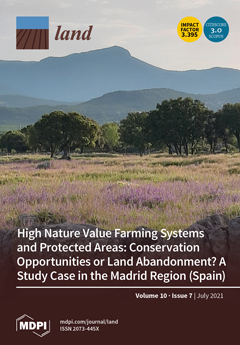Rapid urbanization in China has triggered the mass migration of rural populations to cities. These policies have resulted in a shortage of construction land for the urban population and in an inefficient use of rural homestead, causing a tremendous waste of rural land
[...] Read more.
Rapid urbanization in China has triggered the mass migration of rural populations to cities. These policies have resulted in a shortage of construction land for the urban population and in an inefficient use of rural homestead, causing a tremendous waste of rural land resources. Rural homestead transfer has been identified as a tool to solve this problem: the saved construction land can be reclaimed to cultivated land, and the construction rights are transferred to urban areas, where they can be used to build new households for the demanding population. We consider that transaction costs analysis can help understand the governance structures of the homestead processes, and provide avenues for further research and policy recommendations. Our article draws on the practices and experiences gained in three areas in rural China (
Jinzhai,
Yiwu, and
Jiangning in the Anhui, Zhejiang, and Jiangsu Provinces, China). Based on the empirical cases and information produced from the villages and households survey, we developed an analytical framework of transaction cost. Results suggest that
Yiwu has lower assets specificity, lower uncertainty, and transaction frequency, hence the market driven model played a major role. In
Jinzhai, which presents higher assets specificity, higher uncertainty, and transaction frequency, the government-oriented model also played a major role. In
Jiangning, where most transaction attributes are situated in the middle, the mixed-oriented model acted as a main role in the local area. Our conclusion shows that various governance structures are appropriate for different areas of rural China, which is significantly related to the local transaction attributes. We suggest promoting the governance structure which corresponds to the local resource endowment, human and residential condition, the cultural atmosphere, and also the institutional (official) atmosphere. Matched with the government or/and market governance structure, it may develop the resource allocation efficiency and improve economic performance.
Full article





